#small globe thistle
Explore tagged Tumblr posts
Text



Plant of the Day
Wednesday 5 March 2025
Another herbaceous perennial that provides great winter seed-heads is Echinops ritro (small globe thistle, blue hedgehog, globe flower, steel globe thistle) but now it is ready to be cutback before the new spring growth. This vigorous, upright plant has prickly dark green leaves which are whitish beneath and rounded, violet-blue flower heads from midsummer.
Jill Raggett
#Echinops#small globe thistle#blue hedgehog#globe flower#steel globe thistle#seed-heads#herbaceous#perennial#plants#horticulture#gardens#garden#aberdeen#park#herbaceousperennial#Union Terrace Garden
68 notes
·
View notes
Text








#ECHINOPS RITRO - SMALL GLOBE THISTLE🌿*️⃣
@samirafee
#source: samirafee#own pictures#photographers on tumblr#nature#plants#my garden#echinops ritro#small globe thistle#development#july 2024
51 notes
·
View notes
Text
Wool-Carder Bees: these solitary bees harvest the soft, downy hairs that grow on certain plants, rolling them into bundles and then using the material to line their nests
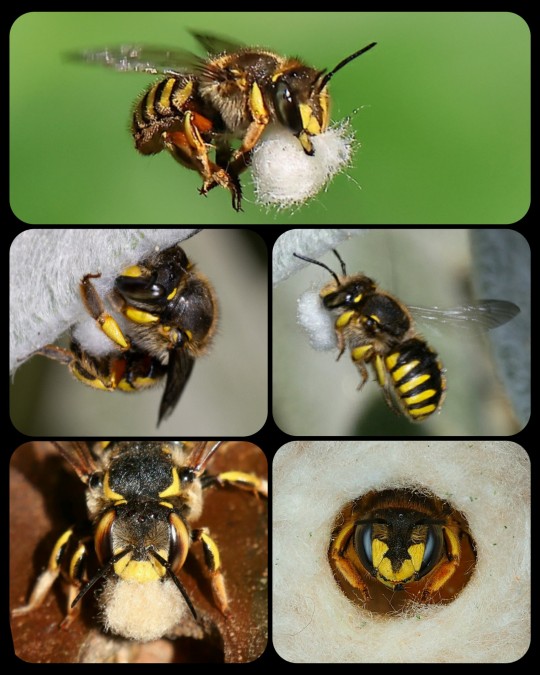
Wool-carder bees build their nests in existing cavities, usually finding a hole/crevice in a tree, a plant stem, a piece of rotting wood, or a man-made structure, and then lining the cavity with woolly plant fibers, which are used to form a series of brood cells.
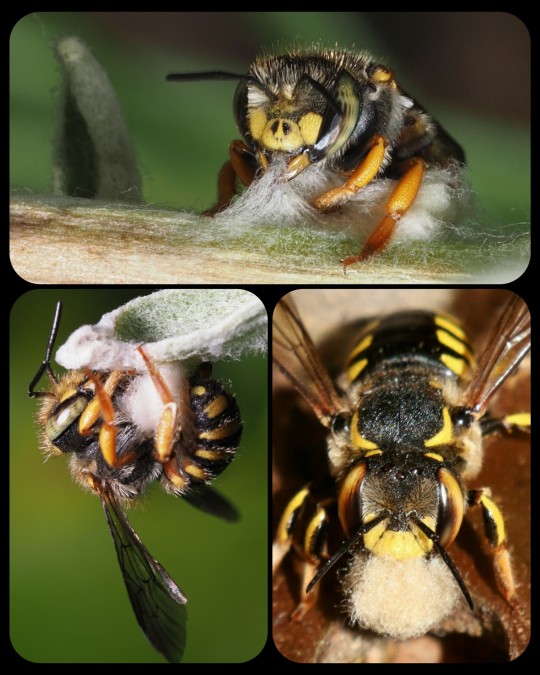
The fibers (known as trichomes) are collected from the leaves and stems of various plants, including lamb’s ear (Stachys byzantina), mulleins, globe thistle, rose campion, and other fuzzy plants.

From the University of Florida's Department of Entomology & Nematology:
The female uses her toothed mandibles to scrape trichomes off fuzzy plants and collects a ball of the material under her abdomen. She transports these soft plant fibers to her selected nest site and uses them to line a brood cell. Next, she collects and deposits a provision of pollen and nectar into the cell, enough pollen to feed a larva until it is ready to pupate. Lastly, she lays a single egg on top of the pollen and nectar supply before sealing the cell. ... She will repeat this process with adjoining cells until the cavity is full.
These are solitary bees, meaning that they do not form colonies or live together in hives. Each female builds her own nest, and the males do not have nests at all.
Female wool-carder bees will sometimes sting if their nest is threatened, but they are generally docile. The males are notoriously aggressive, however; they will often chase, head-butt, and/or wrestle any other insect that invades their territory, and they may defend their territory from intruders up to 70 times per hour. The males do not have stingers, but there are five tiny spikes located on the last segment of their abdomen, and they often use those spikes when fighting. They also have strong, sharp mandibles that can crush other bees.
There are many different types of wool-carder bee, but the most prolific is the European wool-carder (Anthidium manicatum), which is native to Europe, Asia, and North Africa, but has also become established as an invasive species throughout much of North America, most of South America, and New Zealand. It is the most widely distributed unmanaged bee in the world.

A few different species of wool-carder bee: the top row depicts the European wool-carder, A. manicatum (left) and the spotted wool-carder, Anthidium maculosum (right), while the bottom row depicts the reticulated small-woolcarder, Pseudoanthidium reticulatum, and Porter's wool-carder, Anthidium porterae
Sources & More Info:
University of Florida: The Woolcarder Bee
Oregon State University: European Woolcarder Bees
Bohart Museum of Entomology: Facts about the Wool Carder Bee (PDF)
Bumblebee Conservation Trust: A. manicatum
World's Best Gardening Blog: European Wool Carder Bees - Likeable Bullies
Biological Invasions: Global Invasion by Anthidium manicatum
#entomology#hymenoptera#apiology#melittology#bees#woolcarder bees#nature#insects#arthropods#science#solitary bees#european woolcarder#anthidium#animal facts#cool bugs#cute animals
3K notes
·
View notes
Text



Echinops (globe thistle) and Bombus (bumble bee)
I have never seen a bumble bee with a pollen basket this full before. As I watched her methodically go from flower to flower on this globe thistle, it was pollen she was after and the globe thistle was happy to oblige.
Wind-pollenated plants produce enormous quantities of tiny pollen grains on the one-in-a-million chance that one will land on a member of the same species. Insect-pollinated plants produce far fewer but much larger pollen grains, packed with protein to attract hungry bees. They also make nectar which is the fuel that keeps those little wings beating so fast. It's true that the bumble bees eat most of the pollen but using the 'bumble bee taxi service' is still a much more efficient way to get those pollen grains to their designated target.
Unlike honey bees, who make huge amounts of honey so the entire colony can survive the winter, bumble bees only make a small amount of honey—just enough to feed the colony for a couple of days during bad weather. At the end of summer, new queens and drones emerge. After mating, the queen finds a nice little hole in the ground to crawl into and hibernates through the winter.
#flowers#photographers on tumblr#globe thistle#bumble bee#gardening#fleurs#flores#fiori#blumen#bloemen#Vancouver
107 notes
·
View notes
Text
Messages Sent on my Walk
Following on from my post How to Discern Sign from Coincidence, I thought I'd talk about some signs/messages I was sent on my walk the other day and how I've interpreted them!!
A White Feather Caught between a Nettle and Thistle


I spotted this out of the corner of my eye and the imagery was quite jarring to me, it really pulled me in.
The feather was clearly a contour feather; these help create the bird's structure and keep them aerodynamic. It was caught between a common nettle and blue-globed thistle (not native so odd to see wild where I live). Though it may be hard to see in the photo, there is a spiderweb just in front of the feather and a small cranefly on the feather - though these aspects didn't seem as important or significant.
I confirmed it's meaning later with tarot- it was a message regarding myself and the plunge I have taken in my spiritual practice.
A Shadowy Friend
In the corner of my eye, I could see a shadowy figure follow me for a while. He left after I noticed a small tennis ball tucked under a bush and moved it to a more visible spot by the gate for any dogs and their owners passing by. Clearly, that act satisfied him and he disappeared, I'm used to spirits dawdling by me and that specific area - for some reason, spirits congregate there and I think it's because it's a literal and metaphorical crossroads (a point between nature and man-made, water and earth etc).
I confirmed later with tarot what it was and that my act satisfied the lingering spirit.
Blocked Stream

I glanced down at the stream running next to me, to the specific area where I had previously performed a small spell and saw leaves and sticks blocking the area completely - perhaps put there by someone, or blown there by the recent storms. I felt a pull to it, a voice in my mind telling me that this was a sign relating to my spell. I felt a slight bit of sadness as I thought perhaps it was a symbol that the spell had failed but the falling sticks and leaves belonged to a Sycamore tree who loomed over the water - Sycamore's are protectors, wise and old trees that offer guidance and shelter. After I stood and moved from that spot, a white and tawny cat hopped over the same spot and through a gap in the bush ahead.
I confirmed later, with tarot and meditation, that it was indeed a messgae that challenges would lay in between me and my spell's outcome, but that these challenges will be overcome.
Non-Signs that I Saw



Along this work, I also spotted a periwinkle, a flower that reminds me of my childhood, a young purple snapdragon - I was very excited to see a few of these, and hope they grow strong. I also saw the bindweed and brambles commonly found in the area, though many of the blackberries were ripening now. I spotted lavender, a Buddleja bush and a Hairy Willowherb. None of these carried messages, nor were they signs, but I enjoyed seeing them still and found peace and meaning in each of their presences.
#buriedpentacles#queue-tie pie#witch#witchcraft#witch community#nature#pagan#witchblr#paganism#mother nature
22 notes
·
View notes
Text
When does Dungeon Meshi take place?
This is an excerpt from Chapter 2 of my paper, "Real World Cultural and Linguistic Influences in Delicious in Dungeon." Dungeon Meshi takes place in the year 514, however we don’t know how that number relates to anything else in the Dungeon Meshi world, so it isn’t really useful for identifying what era Kui is trying to depict.
It can’t be that the Ancient Cataclysm happened 514 years ago (it was still referred to as ancient history by Thistle and Delgal a thousand years ago), and it can’t be when the current elf queen’s reign began (she’s only 372), so it’s either marking some other major event, like the beginning of the reign of a royal family or the end of a war, or they reset their calendar at regular intervals, such as every two-thousand years for record-keeping purposes.
In the real world, 514 CE would have been the early Medieval era, just after the collapse of the Western Roman Empire, which left Europe fractured into many small Germanic kingdoms competing with each other. It was also the beginning of the Asuka period in Japan, and the end of the Northern Wei Dynasty in China.
This has some similarities to the world we’re shown in Dungeon Meshi: the Western elves have abandoned most of their land in the Eastern hemisphere, leaving the local dwarven, gnomish and tall-man people (whose cultures are primarily Germanic) to fight amongst themselves for the land. A massive upheaval caused by a major imperial power collapsing.
However, based on character behavior, culture, clothing and technology, Dungeon Meshi appears to be set in a vaguely Renaissance (1450 CE-1650 CE) time period, with some elements from classical antiquity (800 BCE-500 CE), the Medieval era (476 CE-1300 CE), as well as some hyper-advanced steampunk/magic technology and modern day anachronisms. (Potential spoilers beyond the cut.)
The technological and artistic development of the different cultures is very different, with the long-lived races appearing to live a more modern lifestyle than the short-lived races. In the extra materials, Toshiro implies that Falin might find the Island of Wa “primitive” because they lack the social and technological advancements that come from contact with the long-lived races, and the Western elf Fleki calls the Eastern Continent a “primitive land” while complaining about the quality of life.
Based on this and additional evidence, we can reasonably conclude that the elven lands in the West are probably the most “modern”, followed by the lands in the Eastern hemisphere, with the Eastern Archipelago lagging the furthest behind.
Because of this difference between the races, it makes sense that we see a mix of different eras and styles of technology and clothing. For example, we see characters wearing Neolithic fur garments, Greco-Roman tunics, and Medieval garments as everyday clothes at the same time that other characters wear Renaissance and even 19th century-influenced garments.
Meanwhile, many things in the Dungeon Meshi world have also remained unusually stagnant for far longer than they did in the real world. Realistic oil painting seems to have remained unchanged for more than a thousand years, and Medieval-looking clothing that was worn a thousand years ago is still being worn in the “present” day, virtually unchanged.
There are also some things that are much more advanced than the Renaissance period, like steampunk elevators, and magical communication that works through birds/fairies/crystal balls/telephones and allows for instant contact across the globe… A huge advancement that should impact every element of life and society, thanks to the ability to easily exchange information.
In the real world, instant communication is the foundational element that makes things like precise time-keeping, time-zones, advanced banking, stock markets and news reporting possible… So one can assume that some of these things might possibly exist in some form in the Dungeon Meshi setting.
45 notes
·
View notes
Text
Seeds Purchased from Stonecrop Gardens, NY
One of the biggest benefits of membership at Stonecrop is access to their amazing seed bank. Members can purchase rare seeds for $1 a pack. These are plants that are sometimes extremely difficult to find at nurseries and that work perfectly for my area. Here is a list of what I purchased from them...some I've already begun.
The seed collection got suddenly a lot more interesting.
Rarium: Centaurea macrocephala
Rarium: Digitalis parviflora
Rarium: Echinops exaltatus
Rarium: Hosta sieboldiana var. elegans
Rarium: Polygonatum giganteum
Rarium: Salvia coccinea 'Brenthu
Seminum: Acmella oleraceae
Seminum: Actaea japonica (syn. Cimicifuga japonica)
Seminum: Actaea racemosa (syn. Cimicifuga racemosa)
Seminum: Actaea simplex 'Brunette' (syn. Cimicifuga ramosa 'Brunette'
Seminum: Agastache foeniculum 'Alba'
Seminum: Allium angulosum
Seminum: Allium tuberosum
Seminum: Amaranthus hybridus var. erythrostachys
Seminum: Ammi visnaga
Seminum: Anemone virginiana
Seminum: Anethum graveolens
Seminum: Angelica gigas
Seminum: Anthriscus sylvestris 'Raven's Wing'
Seminum: Aster tataricus
Seminum: Astilboides tabularis (syn. Rodgersia tabularis)
Seminum: Astrantia major
Seminum: Calendula officinalis
Seminum: Campanula takesimana 'Alba'
Seminum: Cuphea viscosissima
Seminum: Cynoglossum amabile ‘Firmament’
Seminum: Emilia coccinea
Seminum: Helleborus orientalis
Seminum: Ipomoea lobata (syn. Mina lobata)
Seminum: Monarda punctata
Seminum: Nigella damascena 'Miss Jekyll Blue'
Seminum: Papaver somniferum Mix
Seminum: Salvia farinacea
Seminum: Verbena bonariensis
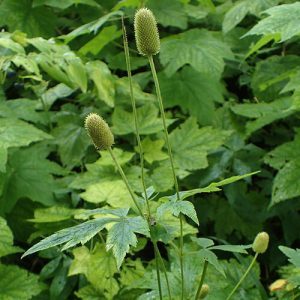
Anemone virginiana. Interesting thing about this plant is that for years I've pulled it thinking it was a weed. On the years that I forgot to pull it, I was like, man that is pretty! So I now leave it alone. It's drought tolerant and the flowers are loved by pollinators. I'll be planting some more from seed as well.

Anethum graveolens - Dill
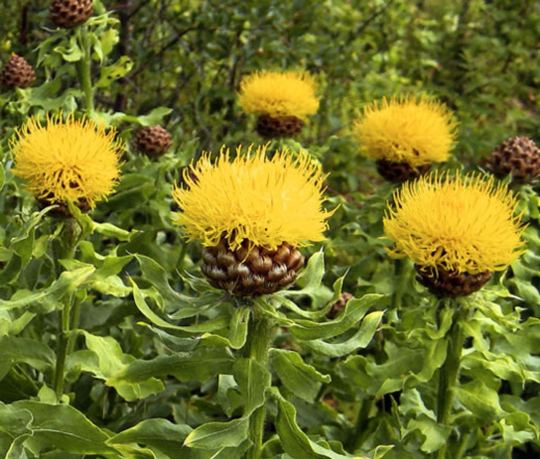
Centaurea macrocephala - Started Seeds 5/3/2024 - This plant is too cool for school!
Category: Rarium | Sub-Category: Perennials for Sun
Scientific Name (Genus/Species): Centaurea macrocephala
Family: (Asteraceae)
(P) to 3′. Great Golden Knapweed. Caucasus. A large, leafy, robust plant bearing sturdy stems topped with incredible, rich golden yellow, hemispherical, thistle-like blooms. The fringed, rusty brown coloured involucre of bracts is very prominent and persists. Midsummer. Makes excellent dried cut flowers. Sun. 3, D & T2

Digitalis parviflora - Started seeds 5/3/2024 - Really different foxglove. Love it.
Category: Rarium | Sub-Category: Perennials for Sun
Scientific Name (Genus/Species): Digitalis parviflora
Family: (Plantaginaceae)
(P) to 2′. Spanish Foxglove. This is a true perennial species of Foxglove, native to the mountains of northern Spain. Plants form a rosette of dark, deeply veined, green leaves bearing in early summer, tightly packed spikes of small, rusty orange-red to chocolate brown flowers on stiff, leafy, upright stems. Eye-catching. Well-drained soil. Sun. 4 & T2
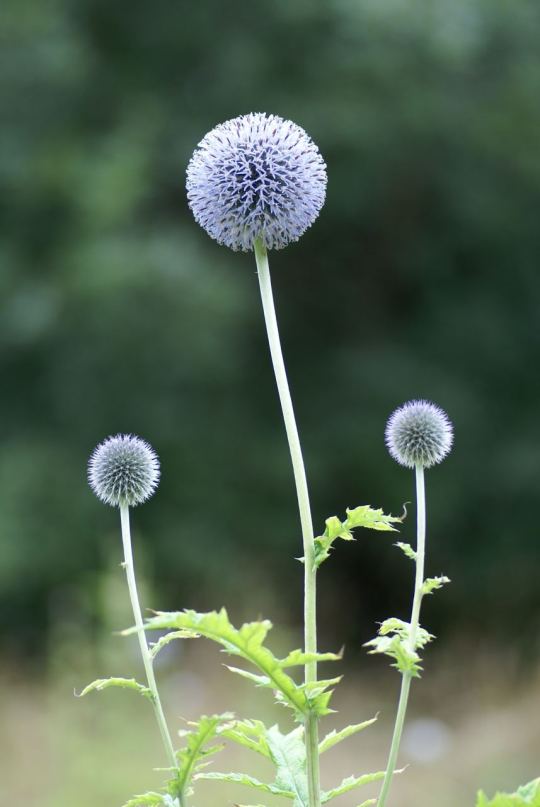
Echinops exaltatus
Category: Rarium | Sub-Category: Perennials for Sun
Scientific Name (Genus/Species): Echinops exaltatus
Family: (Asteraceae)
(P) to 6′. Tall Globe Thistle. Eastern Europe to Russia. Globular flowerheads composed of numerous, tiny, pale blue florets. Flowerheads to 2-½ inches in diameter stand tall on sturdy, downy-white stems and mature into dense, prickly seedheads. The bold, greyish green, thistle-like foliage forms an impressive clump. This summer-to-fall bloomer is a magnet for bees, hoverflies and butterflies. Sun. 4 & T2
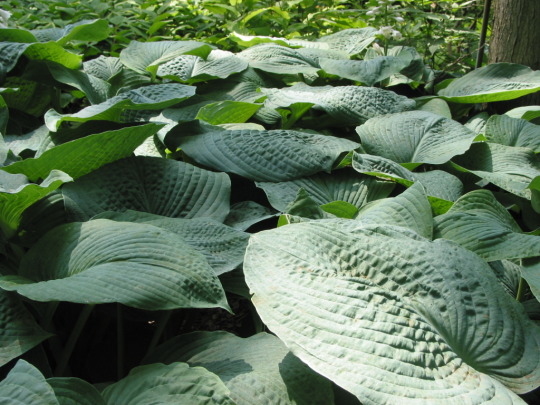
Hosta sieboldiana var. elegans
Category: Rarium | Sub-Category: Woodland
Scientific Name (Genus/Species): Hosta sieboldiana var. elegans
Family: (Asparagaceae)
(P) to 3′. “…most sumptuous of all the Hostas.” (GST**). Huge, broad, glaucous, heavily textured, bluish green leaves form magnificent, stately clumps that add accent and poise to the woodland garden. The pale lilac-white flowers appear in early to midsummer, though they barely emerge from beneath the foliage. 3 & T3, then it may need 40º for 2-3 months.
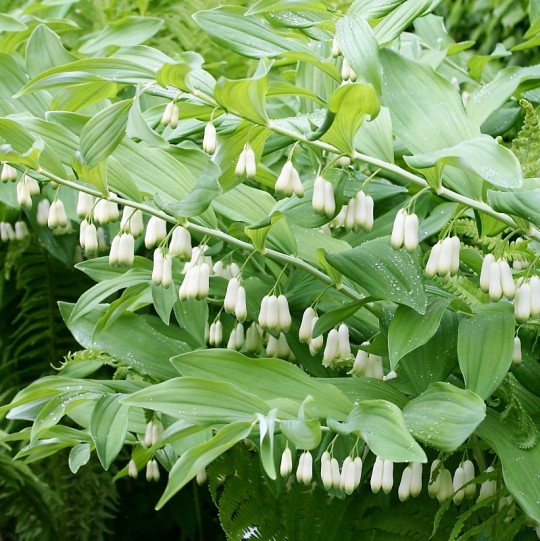
Polygonatum giganteum - Started 5/3/24
Category: Rarium | Sub-Category: Woodland
Scientific Name (Genus/Species): Polygonatum giganteum
Family: (Asparagaceae)
(P) to 7′. Giant Solomon’s Seal. Statuesque and unmistakable. This spectacular giant is similar to Polygonatum biflorum in everything but size. Bell-shaped, greenish white, tubular flowers hang from the tall arching stems in early summer with the dark blue berries following in fall. Moist soil. Shade/partial shade. 3 & 6

Salvia coccinea 'Brenthurst'
Category: Rarium | Sub-Category: Annuals for Sun
Scientific Name (Genus/Species): Salvia coccinea 'Brenthurst'
Family: Lamiaceae
(A/TP) to 2.5′. A cool-coloured cousin of the red bedding Salvia with numerous spikes of bicoloured, lipped blooms. The pale whitish pink upper hoods and three lobed, deeper pink lower lips contrast nicely against the dark tinted calyces and stems. Blooms late summer and lasts until frost. Sun. 4 & T2
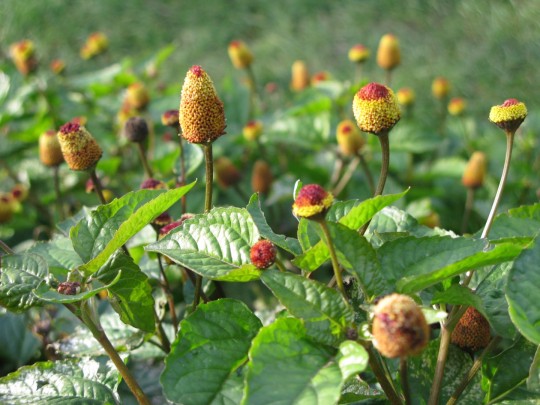
Acmella oleraceae - Toothache Plant
Category: Seminum | Sub-Category: Annuals for Sun
Scientific Name (Genus/Species): Acmella oleraceae
Family: (Asteraceae)
(A) to 10″. Toothache Plant. South America. A profusion of rounded, orange-yellow disc florets with brownish red centres resemble eyeballs. Creeping, bronze-green foliage has numbing properties when chewed, hence the common name. Easy to grow. Very unusual and fun; a “must have”. Summer blooming. Sun. 3 & 6
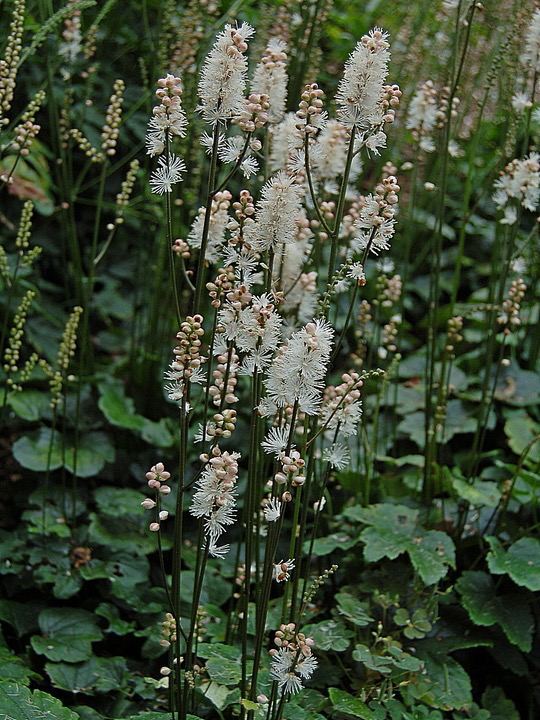
Actaea japonica (syn. Cimicifuga japonica) - snakeroot
Category: Rarium | Sub-Category: Woodland
Scientific Name (Genus/Species): Actaea japonica var. acerina (syn. Cimicifuga japonica var. acerina)
Family: (Ranunculaceae)
(P) to 3′. A Japanese native with handsome maple-like foliage that has long, pointed lobes. Slender branched spikes of white, tufted flowers bloom in September and October. Moist soil. Sun/partial shade. 3 & 6A

Actaea racemosa (syn. Cimicifuga racemosa)
Category: Seminum | Sub-Category: Woodland
Scientific Name (Genus/Species): Actaea racemosa (syn. Cimicifuga racemosa)
Family: (Ranunculaceae)
(P) to 6′. Early Snakeroot, Black Cohosh. An eastern North American native with branched wands of white, bottlebrush flowers. Blooms prolifically in June. Light green, divided foliage remains at three feet tall. Partial shade. 3 & 6A
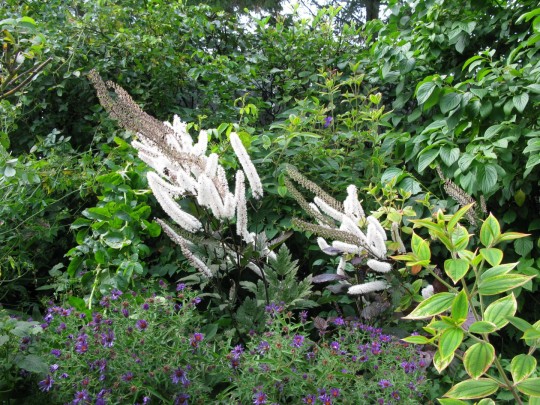
Actaea simplex 'Brunette' (syn. Cimicifuga ramosa 'Brunette')
Category: Seminum | Sub-Category: Woodland
Scientific Name (Genus/Species): Actaea simplex 'Brunette' (syn. Cimicifuga ramosa 'Brunette')
Family: (Ranunculaceae)
(P) to 6′. One of the darkest leaved Cimicifugas. Stems are a rich purplish brown with pure white, upright, fragrant flower spikes in September. Not all seedlings will be as dark as ‘Brunette’, but definitely worth a try. Partial shade. 3 & 6A

Agastache foeniculum 'Alba'
Category: Seminum | Sub-Category: Perennials for Sun
Scientific Name (Genus/Species): Agastache foeniculum 'Alba'
Family: Lamiaceae
Short-lived perennial to 3.5′. White Anise Hyssop. A white cultivar of the above. Sun/partial shade. 4 & T2

Allium angulosum - mouse garlic
Category: Seminum | Sub-Category: Bulbs
Scientific Name (Genus/Species): Allium angulosum
Family: (Alliaceae)
Hardy bulb to 16″. Mouse Garlic. Europe. Loose heads formed by multiple, cup-shaped flowers of pale purple. Blooms June to August. Sun. 3 & 6
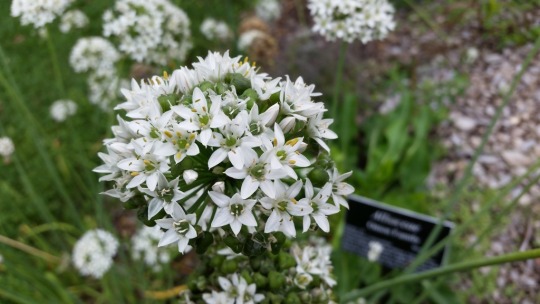
Allium tuberosum - this already grows wild here
Category: Seminum | Sub-Category: Bulbs
Scientific Name (Genus/Species): Allium tuberosum
Family: (Alliaceae)
Hardy bulb to 18″. Garlic Chives. Southeast Asia. Spherical, white blooms freshen the flower garden throughout August. Sun/partial shade. 3 & 6
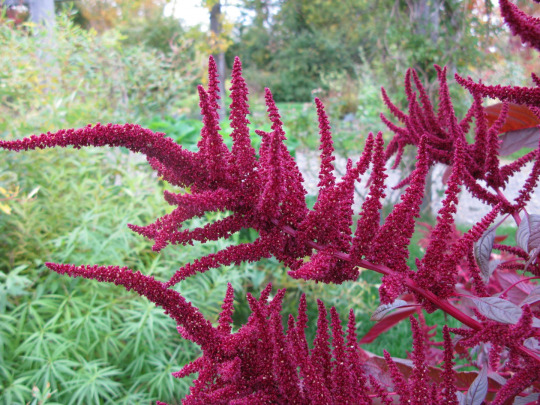
Amaranthus hybridus var. erythrostachys
Category: Seminum | Sub-Category: Annuals for Sun
Scientific Name (Genus/Species): Amaranthus hybridus var. erythrostachys
Family: (Amaranthaceae)
(A) to 5′. Peruvian Tassel Flower. Many branched panicles of crimson, tassel-like flowers accentuated by the deep maroon foliage of this plant, creates drama in the border. Sun. 3 & T3
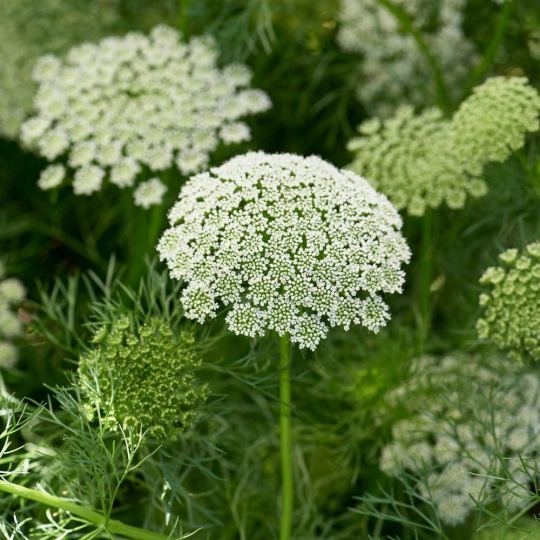
Ammi visnaga - Started Seeds 5/3/2024
Category: Seminum | Sub-Category: Annuals for Sun
Scientific Name (Genus/Species): Ammi visnaga
Family: (Apiaceae)
(A) to 3′. Khella, Toothpick Plant. Egypt. Grown since antiquity for medicinal purposes. This sophisticated Queen Anne’s Lace relative produces masses of feathery, delicate, aromatic foliage topped with wide, compound, flat umbels of tiny, greenish-white flowers. An excellent and unusual filler; most desirable for cut flower displays. Well-drained soil. Sun. 3 & T1
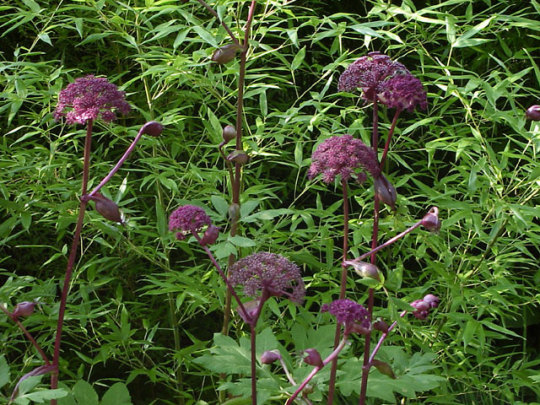
Angelica gigas - Started seeds 5/3/2024
Category: Seminum | Sub-Category: Perennials for Sun
Scientific Name (Genus/Species): Angelica gigas
Family: (Apiaceae)
(B/P) to 5′. This terrific Barry Yinger introduction from Korea and Japan is a stunner. Dramatic, deep maroon, spherical flowerheads emerge from red-flushed, bulbous, leafy sheaths above glossy green, dissected foliage. The afternoon sun intensifies the colour and lends this plant another dimension. Please note, insects, especially hornets, also find it irresistible. Sun/partial shade. 3 & 6
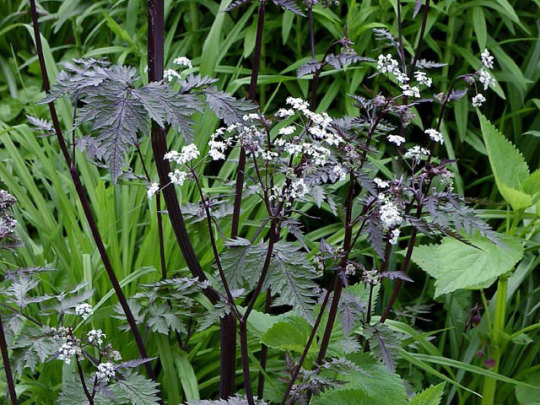
Anthriscus sylvestris 'Raven's Wing'
Category: Seminum | Sub-Category: Perennials for Sun
Scientific Name (Genus/Species): Anthriscus sylvestris 'Raven's Wing'
Family: (Apiaceae)
(B/P) to 5′. Lacey compound umbels of tiny, five-petalled, creamy white flowers, reminiscent of Queen Anne’s Lace, float on hollow, dark stems above fern-like, dusky purple-coloured foliage. Long bloomer that provides an airy elegance to the border. Always admired in our Flower Garden. Self-seeds gently. Sun/partial shade. 3 & 6

Aster tataricus - this is already thriving in the garden
Category: Seminum | Sub-Category: Perennials for Sun
Scientific Name (Genus/Species): Aster tataricus
Family: (Asteraceae)
(P) to 7′. Tatarian Aster. Siberia. Tall, long-blooming Aster with glorious, loose sprays of bold, lilac-blue daisies with yellow centres. Dense clusters of wide, lance-shaped leaves. Tough, durable plant that will thrive in a variety of conditions. No staking needed, blooms late – September and October and well worth the wait. Sun/partial shade. 3 & 6 & Δ
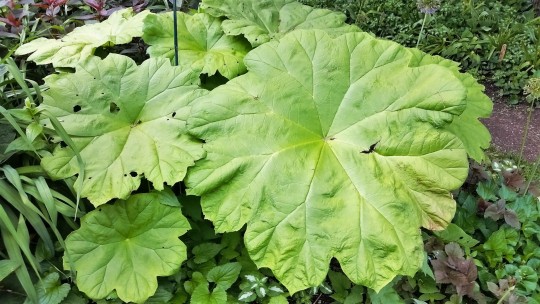
Astilboides tabularis (syn. Rodgersia tabularis) - Planted some last year, started a bunch of seeds - we'll see. 5/3/2024
Category: Seminum | Sub-Category: Woodland
Scientific Name (Genus/Species): Astilboides tabularis (syn. Rodgersia tabularis)
Family: (Saxifragaceae)
(P) to 4′. William Robinson described it best, “A bold growing and handsome species with huge peltate leaves and plumes of creamy white flowers.” Leaves reach a height of 2 to 2.5 feet. A superb plant to use as a focal point in the garden. Definitely stimulates conversation. Partial shade. 4 & T2

Astrantia major
Category: Seminum | Sub-Category: Woodland
Scientific Name (Genus/Species): Astrantia major
Family: (Apiaceae)
(P) to 2.5′. Great Masterwort. Central and eastern Europe. No garden should be without this effortless and beautiful plant. Several greenish white, often blushed pink flowerheads each arranged in a dome with a “collar” of bracts. Dense clumps of divided basal foliage. Content in the flower garden or in the woodland. Summer blooming. Great in flower arrangements, too. Sun/partial shade. PC- 4 weeks. 4 & 7 for 4 weeks, then T2

Campanula takesimana
Category: Seminum | Sub-Category: Woodland
Scientific Name (Genus/Species): Campanula takesimana 'Alba'
Family: (Campanulaceae)
(P) to 2′. Korea. An outstanding white variety of the beautiful Campanula takesimana. Leaves large in basal rosettes. Branched inflorescence of large, pendant bells on nodding stalks. Flowers are pure white with purple spotting within. Blooms July to September. Sun/partial shade. 4 & T2
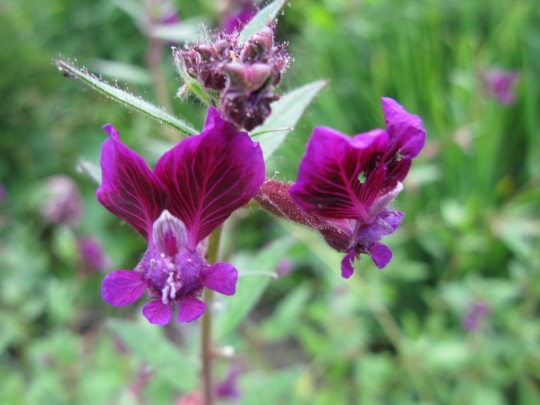
Cuphea viscosissima - Seeds already started 5/3/2024
Category: Seminum | Sub-Category: Annuals for Sun
Scientific Name (Genus/Species): Cuphea viscosissima
Family: (Lythraceae)
(A) to 20″. Blue Waxweed. A North American native and one of our most revered annuals. This non-stop summer bloomer has six deep, magenta-purple petals with the upper two being the longest and a tubular green calyx covered in fine purple hairs. An easy-care annual that requires no deadheading or staking. Very sticky stems trap unsuspecting insects. Self-sows. Sun. 4 & T3
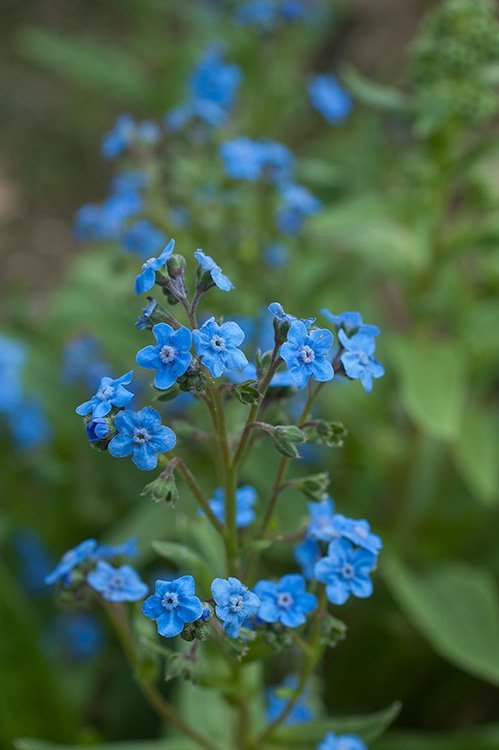
Cynoglossum amabile ‘Firmament’ - chinese forget me not
Category: Seminum | Sub-Category: Annuals for Sun
Scientific Name (Genus/Species): Cynoglossum amabile ‘Firmament’
Family: (Boraginaceae)
(A) to 2.5′. Chinese Forget-me-not. Producing all summer long a profusion of sky-blue, five-petalled flowers. Reminiscent of the Forget-me-not, only taller. Self-sows. Sun. 3, D & T2
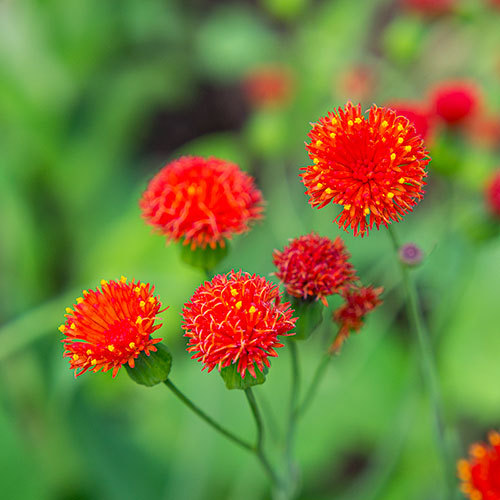
Emilia coccinea
Category: Seminum | Sub-Category: Annuals for Sun
Scientific Name (Genus/Species): Emilia coccinea
Family: (Asteraceae)
(A) to 3′. We love this selection of Tassel Flower. A native of Tropical Africa that produces a profusion of orange to scarlet, thistle-like flowers in terminal corymbs. Best if inter-planted or grown closely together. A real beauty in our Red/Orange/Yellow Bed. Sun.

Helleborus orientalis
Category: Seminum | Sub-Category: Woodland
Scientific Name (Genus/Species): Helleborus orientalis
Family: (Ranunculaceae)
(P) to 2′. Lenten Rose. Europe. Leaves are wide, dentate, glossy and evergreen. Nodding, cup-shaped, pinkish rose, five-petalled flowers have numerous cream stamens. An understated, long-blooming beauty. Early spring. Partial shade. 3 & 72° for 6 weeks, followed by 25-39° for 6-8 weeks.
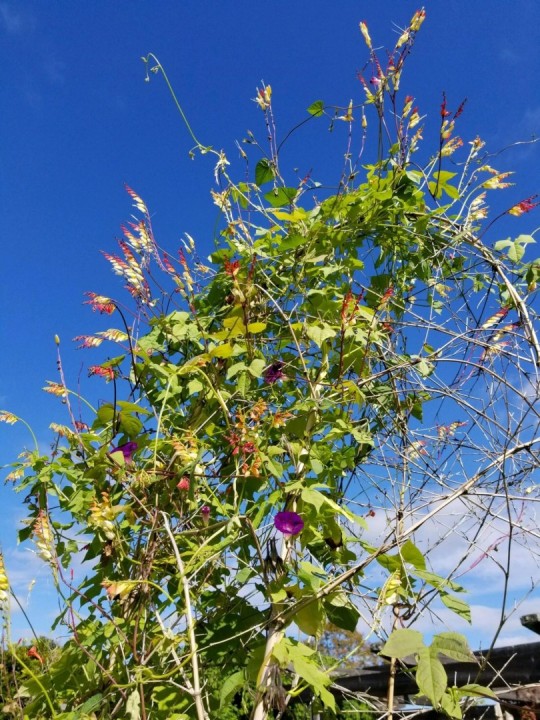
Ipomoea lobata (syn. Mina lobata) spanish flag
Category: Seminum | Sub-Category: Annuals for Sun
Scientific Name (Genus/Species): Ipomoea lobata (syn. Mina lobata)
Family: (Convolvulaceae)
Annual vine to 10′. Spanish Flag or Firecracker Vine. Mexico. An excellent, vigorous, twining vine with attractive, tri-lobed leaves and single-sided, six-inch long racemes of tubular flowers held on slender red stems. The flowers gently arc upward and outward, away from the vine, and mature from red to pale yellow, creating a gradient from the top to the base of the raceme. Blooms freely from mid to late summer until frost. The flowers are highly attractive to hummingbirds, butterflies, and other pollinators. A show-stopper on a tripod. Sun. 1, 2B, 3 & T3

Monarda punctata - Started seeds 5/3/2024
Category: Seminum | Sub-Category: Annuals for Sun
Scientific Name (Genus/Species): Monarda punctata
Family: (Lamiaceae)
(A) to 3′. Horse Mint. Native to the Great Plains of the United States. Dense whorls of pale yellow, hooded flowers spotted with purple-brown. Each whorl is surrounded by large, pink-tipped, green bracts. The narrow, toothed leaves have a grey cast. A very showy plant. Sun. 4 & T1
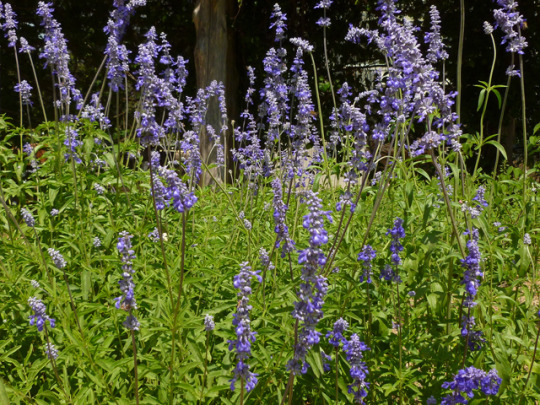
Salvia farinacea
Category: Seminum | Sub-Category: Annuals for Sun
Scientific Name (Genus/Species): Salvia farinacea
Family: (Lamiaceae)
(A) to 3′. Mealy Sage. Native to Texas and Mexico. Tubular, two-lipped, violet-blue flowers are densely congested in whorls along erect stems creating a 4″-8″ spike above the numerous grey-green, lance-shaped leaves. The common name is in reference to the mealy-white (sometimes purple) appearance of the sepals, which are covered with felted hairs. A long-bloomer. Sun/partial shade. 4 & T2
9 notes
·
View notes
Text
Last Day in Tunisia
Today is our last day in Tunisia. We drove back to Tunis with a couple of what I thought were minor stops along the way.
We stopped at a spring that fed an 80 km Roman aqueduct to Carthage. They built a small temple over the spring.

Along the way, we saw more groves of olives and hedges of prickly pear along with wheat fields.

The big stop of the day was the ruins of Roman Thuburbo Majus, apparently a major Roman town, but not much of a ruin. Of course, by now we have seen enough temples and baths that they need to be spectacular to make much of an impression; these didn't.



I spotted a brilliant Glandular Globe Thistle.

I have been using the Seek App regularly to identify plants on the trip and it says I've added 40 new plants to my list. But since I didn't have a huge list before it's still pretty small compared to Steve Balling's. Since the information in Seek is crowd-sourced there has to have been knowledgeable people there before to make the identifications, and often that's not the case on my trips. This time I suspect these are all plants found around the Mediterranean. Often it can't identify plants at all.
Finally, we went to a very touristy neighborhood of Tunis. It was very pretty but in a Disneyfied way and full of tourists. So not really interesting.
We have a last dinner tonight, then I have a 1:50 AM flight to Frankfurt on the way home.
3 notes
·
View notes
Text
Time in a Bottle - FFXIV Write 2023 - Day 26: Last
Ao3
-
Mist curled off the cobble paths that defined the small settlement of Revenant’s Toll. A constant veil of rain cloaked Mor Dhona as far as the eye could see, stretching the storm’s grasp over the edge of the horizon every which way. Water droplets skipped and sang with glee across the person-less city, warding all to stay inside until the rain was done with its fun, else they get drenched.
Halditar and Estinien lounged in the Seventh Heaven’s doorway, staring out into the haze. The awning was only just enough to protect the dragoon and once-dragoon from an impromptu shower, the humid air from inside flowing out as the cool air flowed in.
“So much for pushing off early.” The brusk man hid a sigh under his breath. His companion had her eyes locked skyward, staring at the endless sea of gray above. The sun was completely covered, all signs of time hidden behind the day.
“It’s not going to end until tomorrow. Seems we’re stuck here then.” She agreed. Despite what most would say was dour weather, no one seemed to mind or fret. The shade cast by the sky was comfortable, and the temperature pleasant. The Warrior of Light closed her eyes and just listened for a moment.
The sound of rain hitting the leaves of the trees, branches weighed down and tapping against the metal lamp posts musical. Not far off, Moondrop the chocobo whistled from the stables, eager to roll about in the rain and clean her feathers. If she had a restless night’s sleep, Halditar could have imagined herself drifting off. She took a deep breath, filling her lungs with the scent of fresh water and earth. Somewhere, lightning must have cracked the sky as a low rumble shook through the earth.
“I’m going to head in. Try not to disappear as soon as I turn my back.” She asked the dragoon, patting his shoulder as she turned away from the open door. The tavern was empty of all but a few scholars and the Wandering Minstrel, whose harp’s song stood kindly alongside the crackle of the fire and pen on paper of the few guests that filled seats. A sound that haunted the entire building, even the Rising Stones as Halditar walked down into the sanctum.
Another song joined the bard’s, Tataru humming as she penned in a ledger, fingers occasionally clacking abacus beads together as she sorted through their finances. The roegadyn kept her gait as light, so as not to disturb the peace.
Everyone had taken to their own activities while sharing the common space. Thancred and F’lhaminn spoke softly over warmed cider, the smell of apple and spice mingling nicely with the ozone left by the storm. Urianger’s star globe cast small reflections of golden star shapes on the walls, cards laid out before him on the table in some sort of reading. Alisaie and Krile were across from him, conversing about things regarding fate and magic and aether in hushed voices. The couches had been co-opted by Y’shtola, G’raha, and their many, many books. Shtola was quietly spilling over them still, her own cup of cider warming her hands, while Raha had at some point drifted off into a light slumber. He wasn’t alone, though. Thistle, the sneaky bullpup that she was, had wormed her way happily into the miqo’te’s lap and was snoring atop one of his open tomes. And-
“Halditar, over here.” Alphinaud called the warrior of light over softly, so not to break the concentration of others. She approached where he sat, grinning as she saw the familiar play mat in front of him.
“Finally picking up my favorite hobby, I see.” She said and looked over the triple triad board. He has a few card sets, complete with matching, organized sleeves like some of the more refined gambler types she ran into when wasting time at the Saucer.
“Indeed. I figured it’d be nice to test my skills with a new type of strategy game. Though,” the young man grinned, a bit of a fire in his eyes as he looked up at the hero he knew was a loyal friend. “It’s not as challenging to play against one’s self instead of a real opponent…”
“Oooh, you’re gonna regret tempting me, boy. If you think I’ll go easy on a beginner, you’re in for a rough time.” Halditar didn’t hesitate to claim the seat across from him and pulled out her own multiple decks, worn and a bit creased, but lovingly played. Alphinaud grinned and leaned, laying out his cards with a single swift moment.
“Please don’t. I want my victory to feel satisfying.” He challenged back, and the game was afoot.
Thunder roared again, a low rumble that warmed all to stay where they were. The Warrior of Light saw no problem at such a request, the sense of time slipping away as she was enraptured in the game and the surrounding environment. As if it was a spell, the rain conjured this small moment of peace for all the Scions basking in and enjoy sharing company in parallel activities. A time that couldn’t last, but a memory that certainly would.
3 notes
·
View notes
Text


⋆ ✰ ⋆ ─── a plot, a ploy, a starter for @dutyworn .

𝐆𝐑𝐀𝐕𝐈𝐓𝐘 𝐉𝐔𝐒𝐓... 𝐈𝐒𝐍'𝐓 𝐖𝐎𝐑𝐊𝐈𝐍𝐆 𝐐𝐔𝐈𝐓𝐄 𝐑𝐈𝐆𝐇𝐓 — not that she’s entirely too familiar with the concept of gravity, for all the good that does her. Because wherever she is, gravity matters, and so does a sudden lack thereof that leaves her weightless and bumping into the ceiling. She can’t even compare it to Alice’s Adventures in Wonderland — because unlike most little girls, she’d never had a copy when she was young. Dominik has never really left her without — there are other books, and music, and paints and canvasses — though oftentimes Dominik takes them when she’s done, and they disappear to wherever he disappears to when he’s not with her, and she’s on her own again.
Except now, the controlled doors are open and Dominik’s not on the other side of them and there is a siren and bright red flashing lights illuminating the frame of the studio-like space she’s spent nearly all of her life in. Something tells her that’s not supposed to be happening — because for one thing, it never has in all of her twenty-four years of existence. Yes, she may very well fancy herself Alice, topsy-turvy and in a strange new world — were she to have ever made the fictional acquaintance of the lass. It’s definitely an experience — being jammed up on the ceiling with odds and ends of varying size and shape. Her hair is flyaway, and so is her dress, which she bunches into one hand, pulling tight around her for modesty’s sake as she swims along the ceiling with one hand toward something called ‘freedom’ that she can’t fathom — either because it’s too good to be true, or because it’s a concept she could never understand.
She barely remembers life before Dominik. She’d only been four years old, after all. Even the things she believes to be true are most likely not. The only keepsake she has from a time before is a necklace with a flower woven into a heart shape — according to a botany book that she’s read cover to cover — it’s called a thistle. She can quote the entry back to herself for how many times she’s looked it over.
Thistle. A weedy species of Cirsium, Carduus, Echinops, Sonchus, and other plant genera of the family Asteraceae. The word thistle most often refers to prickly leaved species of Carduus and Cirsium, which have dense heads of small, usually pink or purple flowers. Plants of the genus Carduus, sometimes called plumeless thistles, have spiny stems and flower heads without ray flowers. Canadian thistle (Cirsium arvense) is a troublesome weed in agricultural areas of North America, and more than 10 species of sow thistle (Sonchus) are widespread throughout Europe. Some species of globe thistle (Echinops) are cultivated as ornamentals. The thistle is the national emblem of Scotland.
So few of the words mean anything to her. She sees things on television, she hears them sung about in song, and reads about them in her books — but they are things meant for someone else, never for her. What is Scotland? Was it once a home to her?
Breaching the door frame makes her heart flutter and pound, or maybe that’s the weightlessness — everything rushing to her head all at once. She finds herself at the end of a long, rounded hallway. To her right is a wall with a few doors scattered about, and to her left is the vast enormity of everything — space, as far as the eye can see along a wall almost completely made up of windows. “Woah!” she gasps, and tries to step back, which of course doesn’t do her a lick of good. Her heart’s ratcheting now, in full-blown panic. Where on Earth is she? Or rather....where...not on Earth...is she?
#dutyworn#➤ 𝚍𝚞𝚝𝚢𝚠𝚘𝚛𝚗 ┊ wren & marin ➷ (𝟎𝟎𝟏.)#➤ 𝚇𝚅𝙸. 𝚃𝙷𝙴 𝚃𝙾𝚆𝙴𝚁 ┊ marin gunderson.#child kidnapping cw#⋆ ⚓︎ ⋆ ── 𝐂𝐋𝐎𝐒𝐄𝐃 𝐒𝐓𝐀𝐑𝐓𝐄𝐑 ┊ 𝑎𝑛 𝑜𝑐𝑒𝑎𝑛 𝑎𝑏𝑜𝑣𝑒 𝑚𝑦 ℎ𝑒𝑎𝑑.
4 notes
·
View notes
Photo

Hi GPODers! We’re back in Boulder, Colorado (Zone 4/5) to see more of Bonnie Phipps Moninger’s gorgeous flower garden. In case you missed it yesterday, check out Part 1 here. Yesterday we saw the new flower garden full of spring blooms, today we get to see how the space looked in late summer. In 2006 we built a 19’ diameter walking circle in our north side yard (pictured below.) We built it about 3’ in front of three beautiful Buffalo junipers (Juniperus sabina ‘Buffalo’, Zones 3–7) that were there when we moved in. But the junipers kept growing and eventually grew into our walking circle. I kept cutting them back each year and eventually, they became an ugly jumper wall. So, in April 2020, Raul, the gardener I work with, dug them out along with a few other plants that were there. It was amazing how much space each juniper took up. I decided to redo the whole area into a flower bed since this is one of the few areas in our yard that gets a fair amount of sun, though not exactly full sun. My Garden Fairy amongst all the flowers including Kniphofia in the foreground and Annabelle hydrangeas (Hydrangea arborescens ‘Annabelle’, Zones 3–9) in the back sitting area. At the bottom of the rock are spring-blooming snowdrop anemones (Anemone sylvestris, Zones 2–9) that I planted this year. I hope they come back next spring. It’s hard to get plants to grow in that small 4” deep area in front of the rock. I’ve been trying, but they don’t last! The sitting area. Kniphofia (red hot pokers) in front with coneflowers in the back. On the right is a garden totem I made this spring in a ceramic class. That was SO fun! A closer look at the Magnus coneflowers (Echinacea purpurea ‘Magnus’, Zones 3–9) and blue globe thistles (Echinops bannaticus ‘Blue Glow’, Zones 3–8). They make a nice combination. I will add more thistles in that area this spring. Prima™ Ginger coneflower (Echinacea ‘TNECHPG’, Zones 4–9) grows only 16” high. I have Blue Fortune agastache (Agastache ‘Blue Fortune’, Zones 5–9) in the back of my garden and somehow its seeds got in the cracks of the tall rock in our walking circle and this plant grew there and comes back each year! So far, I’ve picked the best views of the Flower Garden but there are other areas that still need to be filled in or where plants just didn’t work. To give you another perception of the garden, the next pics are of areas that still need work – but, that’s the fun of it. The dwarf rose of Sharon (Hibiscus syriacus, Zones 5–9) pictured here gets about 4 blooms a season even though it gets buds on it. It’s time to give it away. Plus the area behind it needs to be filled in too. The plant in front of it is a Mellow Yellow spirea (Spiraea thunbergii ‘Ogon’, Zones 4–8) and has great texture. I might try filling in that back area with a dark leaves plant like a dark ninebark and maybe tuck in an Annabelle hydrangea. I want to fill in this bare area in front of the red-hot pokers so by the time its grass-like foliage covers it, it won’t matter. I might try planting Triumph asters (Aster x alpellus ‘Triumph’, Zones 3–9) which bloom in early June and are different from other asters because their foliage makes a mat flat to the ground and the 8″ aster stems come up out of the foliage. (See pic below) Or, maybe I will plant spring-blooming geraniums or dianthus. Asters that bloom in the spring peaking out behind the lady’s mantle (Alchemilla mollis, Zones 3–8). I’m sorry I don’t have a photo of this aster’s foliage. It naturalizes too but very slowly. I love this plant. Thank you so much for sharing this wonderful garden project with us, Bonnie! The floral tapestry you have been able to weave is already so impressive, and I hope we get to see the future alterations and improvements you’ll make. Lastly, a friendly reminder that we’re in need of submissions here at Garden Photo of the Day. I know many of us are patiently waiting for spring to really emerge in our gardens, but in the meantime we can always admire photos from last spring. Check out the paragraph below for information on how to submit your garden, and I hope to see photos of your fabulous flowers soon! Get your garden featured on GPOD! Have photos to share? We’d love to see your garden, a particular collection of plants you love, or a wonderful garden you had the chance to visit! To submit, send 5-10 photos to [email protected] along with some information about the plants in the pictures and where you took the photos. We’d love to hear where you are located, how long you’ve been gardening, successes you are proud of, failures you learned from, hopes for the future, favorite plants, or funny stories from your garden. Have a mobile phone? Tag your photos on Facebook, Instagram or Twitter with #FineGardening! Do you receive the GPOD by email yet? Sign up here. Fine Gardening Recommended Products Johnny’s Selected Seeds Connecta® Cultivation Kit Fine Gardening receives a commission for items purchased through links on this site, including Amazon Associates and other affiliate advertising programs. Choose the right tool head for the job and switch out quickly with a simple push-button release. Includes the Connecta receiver, Connecta Collinear 4 head, Connecta Collinear 7 head, Connecta Contour Wire 4 head, Connecta Contour Wire 6 head, a sustainably harvested oiled ashwood handle, and a stainless-steel carrying clip. SHOWA Atlas 370B Nitrile Palm Coating Gloves, Black, Medium (Pack of 12 Pairs) Fine Gardening receives a commission for items purchased through links on this site, including Amazon Associates and other affiliate advertising programs. Lightweight and close-fitting for excellent dexterity. Machine washable. Breathable back of hand to reduce perspiration. Designed for easy movement and continuous wear. Ideal for aerospace, assembly, automotive, construction, final fix, gardening, manufacturing, operating machinery, packaging, precision handling, tiling, warehousing. ARS Telescoping Long Reach Pruner Fine Gardening receives a commission for items purchased through links on this site, including Amazon Associates and other affiliate advertising programs. Telescopes from 4 to 7'. Cut and Hold (160) Blades. Drop forged blades for unsurpassed long lasting sharpness. Lightweight, 2.3 lbs., for continued use. Perfectly balanced for easy pruning. Source link
0 notes
Photo

Hi GPODers! We’re back in Boulder, Colorado (Zone 4/5) to see more of Bonnie Phipps Moninger’s gorgeous flower garden. In case you missed it yesterday, check out Part 1 here. Yesterday we saw the new flower garden full of spring blooms, today we get to see how the space looked in late summer. In 2006 we built a 19’ diameter walking circle in our north side yard (pictured below.) We built it about 3’ in front of three beautiful Buffalo junipers (Juniperus sabina ‘Buffalo’, Zones 3–7) that were there when we moved in. But the junipers kept growing and eventually grew into our walking circle. I kept cutting them back each year and eventually, they became an ugly jumper wall. So, in April 2020, Raul, the gardener I work with, dug them out along with a few other plants that were there. It was amazing how much space each juniper took up. I decided to redo the whole area into a flower bed since this is one of the few areas in our yard that gets a fair amount of sun, though not exactly full sun. My Garden Fairy amongst all the flowers including Kniphofia in the foreground and Annabelle hydrangeas (Hydrangea arborescens ‘Annabelle’, Zones 3–9) in the back sitting area. At the bottom of the rock are spring-blooming snowdrop anemones (Anemone sylvestris, Zones 2–9) that I planted this year. I hope they come back next spring. It’s hard to get plants to grow in that small 4” deep area in front of the rock. I’ve been trying, but they don’t last! The sitting area. Kniphofia (red hot pokers) in front with coneflowers in the back. On the right is a garden totem I made this spring in a ceramic class. That was SO fun! A closer look at the Magnus coneflowers (Echinacea purpurea ‘Magnus’, Zones 3–9) and blue globe thistles (Echinops bannaticus ‘Blue Glow’, Zones 3–8). They make a nice combination. I will add more thistles in that area this spring. Prima™ Ginger coneflower (Echinacea ‘TNECHPG’, Zones 4–9) grows only 16” high. I have Blue Fortune agastache (Agastache ‘Blue Fortune’, Zones 5–9) in the back of my garden and somehow its seeds got in the cracks of the tall rock in our walking circle and this plant grew there and comes back each year! So far, I’ve picked the best views of the Flower Garden but there are other areas that still need to be filled in or where plants just didn’t work. To give you another perception of the garden, the next pics are of areas that still need work – but, that’s the fun of it. The dwarf rose of Sharon (Hibiscus syriacus, Zones 5–9) pictured here gets about 4 blooms a season even though it gets buds on it. It’s time to give it away. Plus the area behind it needs to be filled in too. The plant in front of it is a Mellow Yellow spirea (Spiraea thunbergii ‘Ogon’, Zones 4–8) and has great texture. I might try filling in that back area with a dark leaves plant like a dark ninebark and maybe tuck in an Annabelle hydrangea. I want to fill in this bare area in front of the red-hot pokers so by the time its grass-like foliage covers it, it won’t matter. I might try planting Triumph asters (Aster x alpellus ‘Triumph’, Zones 3–9) which bloom in early June and are different from other asters because their foliage makes a mat flat to the ground and the 8″ aster stems come up out of the foliage. (See pic below) Or, maybe I will plant spring-blooming geraniums or dianthus. Asters that bloom in the spring peaking out behind the lady’s mantle (Alchemilla mollis, Zones 3–8). I’m sorry I don’t have a photo of this aster’s foliage. It naturalizes too but very slowly. I love this plant. Thank you so much for sharing this wonderful garden project with us, Bonnie! The floral tapestry you have been able to weave is already so impressive, and I hope we get to see the future alterations and improvements you’ll make. Lastly, a friendly reminder that we’re in need of submissions here at Garden Photo of the Day. I know many of us are patiently waiting for spring to really emerge in our gardens, but in the meantime we can always admire photos from last spring. Check out the paragraph below for information on how to submit your garden, and I hope to see photos of your fabulous flowers soon! Get your garden featured on GPOD! Have photos to share? We’d love to see your garden, a particular collection of plants you love, or a wonderful garden you had the chance to visit! To submit, send 5-10 photos to [email protected] along with some information about the plants in the pictures and where you took the photos. We’d love to hear where you are located, how long you’ve been gardening, successes you are proud of, failures you learned from, hopes for the future, favorite plants, or funny stories from your garden. Have a mobile phone? Tag your photos on Facebook, Instagram or Twitter with #FineGardening! Do you receive the GPOD by email yet? Sign up here. Fine Gardening Recommended Products Johnny’s Selected Seeds Connecta® Cultivation Kit Fine Gardening receives a commission for items purchased through links on this site, including Amazon Associates and other affiliate advertising programs. Choose the right tool head for the job and switch out quickly with a simple push-button release. Includes the Connecta receiver, Connecta Collinear 4 head, Connecta Collinear 7 head, Connecta Contour Wire 4 head, Connecta Contour Wire 6 head, a sustainably harvested oiled ashwood handle, and a stainless-steel carrying clip. SHOWA Atlas 370B Nitrile Palm Coating Gloves, Black, Medium (Pack of 12 Pairs) Fine Gardening receives a commission for items purchased through links on this site, including Amazon Associates and other affiliate advertising programs. Lightweight and close-fitting for excellent dexterity. Machine washable. Breathable back of hand to reduce perspiration. Designed for easy movement and continuous wear. Ideal for aerospace, assembly, automotive, construction, final fix, gardening, manufacturing, operating machinery, packaging, precision handling, tiling, warehousing. ARS Telescoping Long Reach Pruner Fine Gardening receives a commission for items purchased through links on this site, including Amazon Associates and other affiliate advertising programs. Telescopes from 4 to 7'. Cut and Hold (160) Blades. Drop forged blades for unsurpassed long lasting sharpness. Lightweight, 2.3 lbs., for continued use. Perfectly balanced for easy pruning. Source link
1 note
·
View note
Photo

Hi GPODers! We’re back in Boulder, Colorado (Zone 4/5) to see more of Bonnie Phipps Moninger’s gorgeous flower garden. In case you missed it yesterday, check out Part 1 here. Yesterday we saw the new flower garden full of spring blooms, today we get to see how the space looked in late summer. In 2006 we built a 19’ diameter walking circle in our north side yard (pictured below.) We built it about 3’ in front of three beautiful Buffalo junipers (Juniperus sabina ‘Buffalo’, Zones 3–7) that were there when we moved in. But the junipers kept growing and eventually grew into our walking circle. I kept cutting them back each year and eventually, they became an ugly jumper wall. So, in April 2020, Raul, the gardener I work with, dug them out along with a few other plants that were there. It was amazing how much space each juniper took up. I decided to redo the whole area into a flower bed since this is one of the few areas in our yard that gets a fair amount of sun, though not exactly full sun. My Garden Fairy amongst all the flowers including Kniphofia in the foreground and Annabelle hydrangeas (Hydrangea arborescens ‘Annabelle’, Zones 3–9) in the back sitting area. At the bottom of the rock are spring-blooming snowdrop anemones (Anemone sylvestris, Zones 2–9) that I planted this year. I hope they come back next spring. It’s hard to get plants to grow in that small 4” deep area in front of the rock. I’ve been trying, but they don’t last! The sitting area. Kniphofia (red hot pokers) in front with coneflowers in the back. On the right is a garden totem I made this spring in a ceramic class. That was SO fun! A closer look at the Magnus coneflowers (Echinacea purpurea ‘Magnus’, Zones 3–9) and blue globe thistles (Echinops bannaticus ‘Blue Glow’, Zones 3–8). They make a nice combination. I will add more thistles in that area this spring. Prima™ Ginger coneflower (Echinacea ‘TNECHPG’, Zones 4–9) grows only 16” high. I have Blue Fortune agastache (Agastache ‘Blue Fortune’, Zones 5–9) in the back of my garden and somehow its seeds got in the cracks of the tall rock in our walking circle and this plant grew there and comes back each year! So far, I’ve picked the best views of the Flower Garden but there are other areas that still need to be filled in or where plants just didn’t work. To give you another perception of the garden, the next pics are of areas that still need work – but, that’s the fun of it. The dwarf rose of Sharon (Hibiscus syriacus, Zones 5–9) pictured here gets about 4 blooms a season even though it gets buds on it. It’s time to give it away. Plus the area behind it needs to be filled in too. The plant in front of it is a Mellow Yellow spirea (Spiraea thunbergii ‘Ogon’, Zones 4–8) and has great texture. I might try filling in that back area with a dark leaves plant like a dark ninebark and maybe tuck in an Annabelle hydrangea. I want to fill in this bare area in front of the red-hot pokers so by the time its grass-like foliage covers it, it won’t matter. I might try planting Triumph asters (Aster x alpellus ‘Triumph’, Zones 3–9) which bloom in early June and are different from other asters because their foliage makes a mat flat to the ground and the 8″ aster stems come up out of the foliage. (See pic below) Or, maybe I will plant spring-blooming geraniums or dianthus. Asters that bloom in the spring peaking out behind the lady’s mantle (Alchemilla mollis, Zones 3–8). I’m sorry I don’t have a photo of this aster’s foliage. It naturalizes too but very slowly. I love this plant. Thank you so much for sharing this wonderful garden project with us, Bonnie! The floral tapestry you have been able to weave is already so impressive, and I hope we get to see the future alterations and improvements you’ll make. Lastly, a friendly reminder that we’re in need of submissions here at Garden Photo of the Day. I know many of us are patiently waiting for spring to really emerge in our gardens, but in the meantime we can always admire photos from last spring. Check out the paragraph below for information on how to submit your garden, and I hope to see photos of your fabulous flowers soon! Get your garden featured on GPOD! Have photos to share? We’d love to see your garden, a particular collection of plants you love, or a wonderful garden you had the chance to visit! To submit, send 5-10 photos to [email protected] along with some information about the plants in the pictures and where you took the photos. We’d love to hear where you are located, how long you’ve been gardening, successes you are proud of, failures you learned from, hopes for the future, favorite plants, or funny stories from your garden. Have a mobile phone? Tag your photos on Facebook, Instagram or Twitter with #FineGardening! Do you receive the GPOD by email yet? Sign up here. Fine Gardening Recommended Products Johnny’s Selected Seeds Connecta® Cultivation Kit Fine Gardening receives a commission for items purchased through links on this site, including Amazon Associates and other affiliate advertising programs. Choose the right tool head for the job and switch out quickly with a simple push-button release. Includes the Connecta receiver, Connecta Collinear 4 head, Connecta Collinear 7 head, Connecta Contour Wire 4 head, Connecta Contour Wire 6 head, a sustainably harvested oiled ashwood handle, and a stainless-steel carrying clip. SHOWA Atlas 370B Nitrile Palm Coating Gloves, Black, Medium (Pack of 12 Pairs) Fine Gardening receives a commission for items purchased through links on this site, including Amazon Associates and other affiliate advertising programs. Lightweight and close-fitting for excellent dexterity. Machine washable. Breathable back of hand to reduce perspiration. Designed for easy movement and continuous wear. Ideal for aerospace, assembly, automotive, construction, final fix, gardening, manufacturing, operating machinery, packaging, precision handling, tiling, warehousing. ARS Telescoping Long Reach Pruner Fine Gardening receives a commission for items purchased through links on this site, including Amazon Associates and other affiliate advertising programs. Telescopes from 4 to 7'. Cut and Hold (160) Blades. Drop forged blades for unsurpassed long lasting sharpness. Lightweight, 2.3 lbs., for continued use. Perfectly balanced for easy pruning. Source link
0 notes
Photo

Hi GPODers! We’re back in Boulder, Colorado (Zone 4/5) to see more of Bonnie Phipps Moninger’s gorgeous flower garden. In case you missed it yesterday, check out Part 1 here. Yesterday we saw the new flower garden full of spring blooms, today we get to see how the space looked in late summer. In 2006 we built a 19’ diameter walking circle in our north side yard (pictured below.) We built it about 3’ in front of three beautiful Buffalo junipers (Juniperus sabina ‘Buffalo’, Zones 3–7) that were there when we moved in. But the junipers kept growing and eventually grew into our walking circle. I kept cutting them back each year and eventually, they became an ugly jumper wall. So, in April 2020, Raul, the gardener I work with, dug them out along with a few other plants that were there. It was amazing how much space each juniper took up. I decided to redo the whole area into a flower bed since this is one of the few areas in our yard that gets a fair amount of sun, though not exactly full sun. My Garden Fairy amongst all the flowers including Kniphofia in the foreground and Annabelle hydrangeas (Hydrangea arborescens ‘Annabelle’, Zones 3–9) in the back sitting area. At the bottom of the rock are spring-blooming snowdrop anemones (Anemone sylvestris, Zones 2–9) that I planted this year. I hope they come back next spring. It’s hard to get plants to grow in that small 4” deep area in front of the rock. I’ve been trying, but they don’t last! The sitting area. Kniphofia (red hot pokers) in front with coneflowers in the back. On the right is a garden totem I made this spring in a ceramic class. That was SO fun! A closer look at the Magnus coneflowers (Echinacea purpurea ‘Magnus’, Zones 3–9) and blue globe thistles (Echinops bannaticus ‘Blue Glow’, Zones 3–8). They make a nice combination. I will add more thistles in that area this spring. Prima™ Ginger coneflower (Echinacea ‘TNECHPG’, Zones 4–9) grows only 16” high. I have Blue Fortune agastache (Agastache ‘Blue Fortune’, Zones 5–9) in the back of my garden and somehow its seeds got in the cracks of the tall rock in our walking circle and this plant grew there and comes back each year! So far, I’ve picked the best views of the Flower Garden but there are other areas that still need to be filled in or where plants just didn’t work. To give you another perception of the garden, the next pics are of areas that still need work – but, that’s the fun of it. The dwarf rose of Sharon (Hibiscus syriacus, Zones 5–9) pictured here gets about 4 blooms a season even though it gets buds on it. It’s time to give it away. Plus the area behind it needs to be filled in too. The plant in front of it is a Mellow Yellow spirea (Spiraea thunbergii ‘Ogon’, Zones 4–8) and has great texture. I might try filling in that back area with a dark leaves plant like a dark ninebark and maybe tuck in an Annabelle hydrangea. I want to fill in this bare area in front of the red-hot pokers so by the time its grass-like foliage covers it, it won’t matter. I might try planting Triumph asters (Aster x alpellus ‘Triumph’, Zones 3–9) which bloom in early June and are different from other asters because their foliage makes a mat flat to the ground and the 8″ aster stems come up out of the foliage. (See pic below) Or, maybe I will plant spring-blooming geraniums or dianthus. Asters that bloom in the spring peaking out behind the lady’s mantle (Alchemilla mollis, Zones 3–8). I’m sorry I don’t have a photo of this aster’s foliage. It naturalizes too but very slowly. I love this plant. Thank you so much for sharing this wonderful garden project with us, Bonnie! The floral tapestry you have been able to weave is already so impressive, and I hope we get to see the future alterations and improvements you’ll make. Lastly, a friendly reminder that we’re in need of submissions here at Garden Photo of the Day. I know many of us are patiently waiting for spring to really emerge in our gardens, but in the meantime we can always admire photos from last spring. Check out the paragraph below for information on how to submit your garden, and I hope to see photos of your fabulous flowers soon! Get your garden featured on GPOD! Have photos to share? We’d love to see your garden, a particular collection of plants you love, or a wonderful garden you had the chance to visit! To submit, send 5-10 photos to [email protected] along with some information about the plants in the pictures and where you took the photos. We’d love to hear where you are located, how long you’ve been gardening, successes you are proud of, failures you learned from, hopes for the future, favorite plants, or funny stories from your garden. Have a mobile phone? Tag your photos on Facebook, Instagram or Twitter with #FineGardening! Do you receive the GPOD by email yet? Sign up here. Fine Gardening Recommended Products Johnny’s Selected Seeds Connecta® Cultivation Kit Fine Gardening receives a commission for items purchased through links on this site, including Amazon Associates and other affiliate advertising programs. Choose the right tool head for the job and switch out quickly with a simple push-button release. Includes the Connecta receiver, Connecta Collinear 4 head, Connecta Collinear 7 head, Connecta Contour Wire 4 head, Connecta Contour Wire 6 head, a sustainably harvested oiled ashwood handle, and a stainless-steel carrying clip. SHOWA Atlas 370B Nitrile Palm Coating Gloves, Black, Medium (Pack of 12 Pairs) Fine Gardening receives a commission for items purchased through links on this site, including Amazon Associates and other affiliate advertising programs. Lightweight and close-fitting for excellent dexterity. Machine washable. Breathable back of hand to reduce perspiration. Designed for easy movement and continuous wear. Ideal for aerospace, assembly, automotive, construction, final fix, gardening, manufacturing, operating machinery, packaging, precision handling, tiling, warehousing. ARS Telescoping Long Reach Pruner Fine Gardening receives a commission for items purchased through links on this site, including Amazon Associates and other affiliate advertising programs. Telescopes from 4 to 7'. Cut and Hold (160) Blades. Drop forged blades for unsurpassed long lasting sharpness. Lightweight, 2.3 lbs., for continued use. Perfectly balanced for easy pruning. Source link
0 notes
Photo

Hi GPODers! We’re back in Boulder, Colorado (Zone 4/5) to see more of Bonnie Phipps Moninger’s gorgeous flower garden. In case you missed it yesterday, check out Part 1 here. Yesterday we saw the new flower garden full of spring blooms, today we get to see how the space looked in late summer. In 2006 we built a 19’ diameter walking circle in our north side yard (pictured below.) We built it about 3’ in front of three beautiful Buffalo junipers (Juniperus sabina ‘Buffalo’, Zones 3–7) that were there when we moved in. But the junipers kept growing and eventually grew into our walking circle. I kept cutting them back each year and eventually, they became an ugly jumper wall. So, in April 2020, Raul, the gardener I work with, dug them out along with a few other plants that were there. It was amazing how much space each juniper took up. I decided to redo the whole area into a flower bed since this is one of the few areas in our yard that gets a fair amount of sun, though not exactly full sun. My Garden Fairy amongst all the flowers including Kniphofia in the foreground and Annabelle hydrangeas (Hydrangea arborescens ‘Annabelle’, Zones 3–9) in the back sitting area. At the bottom of the rock are spring-blooming snowdrop anemones (Anemone sylvestris, Zones 2–9) that I planted this year. I hope they come back next spring. It’s hard to get plants to grow in that small 4” deep area in front of the rock. I’ve been trying, but they don’t last! The sitting area. Kniphofia (red hot pokers) in front with coneflowers in the back. On the right is a garden totem I made this spring in a ceramic class. That was SO fun! A closer look at the Magnus coneflowers (Echinacea purpurea ‘Magnus’, Zones 3–9) and blue globe thistles (Echinops bannaticus ‘Blue Glow’, Zones 3–8). They make a nice combination. I will add more thistles in that area this spring. Prima™ Ginger coneflower (Echinacea ‘TNECHPG’, Zones 4–9) grows only 16” high. I have Blue Fortune agastache (Agastache ‘Blue Fortune’, Zones 5–9) in the back of my garden and somehow its seeds got in the cracks of the tall rock in our walking circle and this plant grew there and comes back each year! So far, I’ve picked the best views of the Flower Garden but there are other areas that still need to be filled in or where plants just didn’t work. To give you another perception of the garden, the next pics are of areas that still need work – but, that’s the fun of it. The dwarf rose of Sharon (Hibiscus syriacus, Zones 5–9) pictured here gets about 4 blooms a season even though it gets buds on it. It’s time to give it away. Plus the area behind it needs to be filled in too. The plant in front of it is a Mellow Yellow spirea (Spiraea thunbergii ‘Ogon’, Zones 4–8) and has great texture. I might try filling in that back area with a dark leaves plant like a dark ninebark and maybe tuck in an Annabelle hydrangea. I want to fill in this bare area in front of the red-hot pokers so by the time its grass-like foliage covers it, it won’t matter. I might try planting Triumph asters (Aster x alpellus ‘Triumph’, Zones 3–9) which bloom in early June and are different from other asters because their foliage makes a mat flat to the ground and the 8″ aster stems come up out of the foliage. (See pic below) Or, maybe I will plant spring-blooming geraniums or dianthus. Asters that bloom in the spring peaking out behind the lady’s mantle (Alchemilla mollis, Zones 3–8). I’m sorry I don’t have a photo of this aster’s foliage. It naturalizes too but very slowly. I love this plant. Thank you so much for sharing this wonderful garden project with us, Bonnie! The floral tapestry you have been able to weave is already so impressive, and I hope we get to see the future alterations and improvements you’ll make. Lastly, a friendly reminder that we’re in need of submissions here at Garden Photo of the Day. I know many of us are patiently waiting for spring to really emerge in our gardens, but in the meantime we can always admire photos from last spring. Check out the paragraph below for information on how to submit your garden, and I hope to see photos of your fabulous flowers soon! Get your garden featured on GPOD! Have photos to share? We’d love to see your garden, a particular collection of plants you love, or a wonderful garden you had the chance to visit! To submit, send 5-10 photos to [email protected] along with some information about the plants in the pictures and where you took the photos. We’d love to hear where you are located, how long you’ve been gardening, successes you are proud of, failures you learned from, hopes for the future, favorite plants, or funny stories from your garden. Have a mobile phone? Tag your photos on Facebook, Instagram or Twitter with #FineGardening! Do you receive the GPOD by email yet? Sign up here. Fine Gardening Recommended Products Johnny’s Selected Seeds Connecta® Cultivation Kit Fine Gardening receives a commission for items purchased through links on this site, including Amazon Associates and other affiliate advertising programs. Choose the right tool head for the job and switch out quickly with a simple push-button release. Includes the Connecta receiver, Connecta Collinear 4 head, Connecta Collinear 7 head, Connecta Contour Wire 4 head, Connecta Contour Wire 6 head, a sustainably harvested oiled ashwood handle, and a stainless-steel carrying clip. SHOWA Atlas 370B Nitrile Palm Coating Gloves, Black, Medium (Pack of 12 Pairs) Fine Gardening receives a commission for items purchased through links on this site, including Amazon Associates and other affiliate advertising programs. Lightweight and close-fitting for excellent dexterity. Machine washable. Breathable back of hand to reduce perspiration. Designed for easy movement and continuous wear. Ideal for aerospace, assembly, automotive, construction, final fix, gardening, manufacturing, operating machinery, packaging, precision handling, tiling, warehousing. ARS Telescoping Long Reach Pruner Fine Gardening receives a commission for items purchased through links on this site, including Amazon Associates and other affiliate advertising programs. Telescopes from 4 to 7'. Cut and Hold (160) Blades. Drop forged blades for unsurpassed long lasting sharpness. Lightweight, 2.3 lbs., for continued use. Perfectly balanced for easy pruning. Source link
0 notes
Photo

Hi GPODers! We’re back in Boulder, Colorado (Zone 4/5) to see more of Bonnie Phipps Moninger’s gorgeous flower garden. In case you missed it yesterday, check out Part 1 here. Yesterday we saw the new flower garden full of spring blooms, today we get to see how the space looked in late summer. In 2006 we built a 19’ diameter walking circle in our north side yard (pictured below.) We built it about 3’ in front of three beautiful Buffalo junipers (Juniperus sabina ‘Buffalo’, Zones 3–7) that were there when we moved in. But the junipers kept growing and eventually grew into our walking circle. I kept cutting them back each year and eventually, they became an ugly jumper wall. So, in April 2020, Raul, the gardener I work with, dug them out along with a few other plants that were there. It was amazing how much space each juniper took up. I decided to redo the whole area into a flower bed since this is one of the few areas in our yard that gets a fair amount of sun, though not exactly full sun. My Garden Fairy amongst all the flowers including Kniphofia in the foreground and Annabelle hydrangeas (Hydrangea arborescens ‘Annabelle’, Zones 3–9) in the back sitting area. At the bottom of the rock are spring-blooming snowdrop anemones (Anemone sylvestris, Zones 2–9) that I planted this year. I hope they come back next spring. It’s hard to get plants to grow in that small 4” deep area in front of the rock. I’ve been trying, but they don’t last! The sitting area. Kniphofia (red hot pokers) in front with coneflowers in the back. On the right is a garden totem I made this spring in a ceramic class. That was SO fun! A closer look at the Magnus coneflowers (Echinacea purpurea ‘Magnus’, Zones 3–9) and blue globe thistles (Echinops bannaticus ‘Blue Glow’, Zones 3–8). They make a nice combination. I will add more thistles in that area this spring. Prima™ Ginger coneflower (Echinacea ‘TNECHPG’, Zones 4–9) grows only 16” high. I have Blue Fortune agastache (Agastache ‘Blue Fortune’, Zones 5–9) in the back of my garden and somehow its seeds got in the cracks of the tall rock in our walking circle and this plant grew there and comes back each year! So far, I’ve picked the best views of the Flower Garden but there are other areas that still need to be filled in or where plants just didn’t work. To give you another perception of the garden, the next pics are of areas that still need work – but, that’s the fun of it. The dwarf rose of Sharon (Hibiscus syriacus, Zones 5–9) pictured here gets about 4 blooms a season even though it gets buds on it. It’s time to give it away. Plus the area behind it needs to be filled in too. The plant in front of it is a Mellow Yellow spirea (Spiraea thunbergii ‘Ogon’, Zones 4–8) and has great texture. I might try filling in that back area with a dark leaves plant like a dark ninebark and maybe tuck in an Annabelle hydrangea. I want to fill in this bare area in front of the red-hot pokers so by the time its grass-like foliage covers it, it won’t matter. I might try planting Triumph asters (Aster x alpellus ‘Triumph’, Zones 3–9) which bloom in early June and are different from other asters because their foliage makes a mat flat to the ground and the 8″ aster stems come up out of the foliage. (See pic below) Or, maybe I will plant spring-blooming geraniums or dianthus. Asters that bloom in the spring peaking out behind the lady’s mantle (Alchemilla mollis, Zones 3–8). I’m sorry I don’t have a photo of this aster’s foliage. It naturalizes too but very slowly. I love this plant. Thank you so much for sharing this wonderful garden project with us, Bonnie! The floral tapestry you have been able to weave is already so impressive, and I hope we get to see the future alterations and improvements you’ll make. Lastly, a friendly reminder that we’re in need of submissions here at Garden Photo of the Day. I know many of us are patiently waiting for spring to really emerge in our gardens, but in the meantime we can always admire photos from last spring. Check out the paragraph below for information on how to submit your garden, and I hope to see photos of your fabulous flowers soon! Get your garden featured on GPOD! Have photos to share? We’d love to see your garden, a particular collection of plants you love, or a wonderful garden you had the chance to visit! To submit, send 5-10 photos to [email protected] along with some information about the plants in the pictures and where you took the photos. We’d love to hear where you are located, how long you’ve been gardening, successes you are proud of, failures you learned from, hopes for the future, favorite plants, or funny stories from your garden. Have a mobile phone? Tag your photos on Facebook, Instagram or Twitter with #FineGardening! Do you receive the GPOD by email yet? Sign up here. Fine Gardening Recommended Products Johnny’s Selected Seeds Connecta® Cultivation Kit Fine Gardening receives a commission for items purchased through links on this site, including Amazon Associates and other affiliate advertising programs. Choose the right tool head for the job and switch out quickly with a simple push-button release. Includes the Connecta receiver, Connecta Collinear 4 head, Connecta Collinear 7 head, Connecta Contour Wire 4 head, Connecta Contour Wire 6 head, a sustainably harvested oiled ashwood handle, and a stainless-steel carrying clip. SHOWA Atlas 370B Nitrile Palm Coating Gloves, Black, Medium (Pack of 12 Pairs) Fine Gardening receives a commission for items purchased through links on this site, including Amazon Associates and other affiliate advertising programs. Lightweight and close-fitting for excellent dexterity. Machine washable. Breathable back of hand to reduce perspiration. Designed for easy movement and continuous wear. Ideal for aerospace, assembly, automotive, construction, final fix, gardening, manufacturing, operating machinery, packaging, precision handling, tiling, warehousing. ARS Telescoping Long Reach Pruner Fine Gardening receives a commission for items purchased through links on this site, including Amazon Associates and other affiliate advertising programs. Telescopes from 4 to 7'. Cut and Hold (160) Blades. Drop forged blades for unsurpassed long lasting sharpness. Lightweight, 2.3 lbs., for continued use. Perfectly balanced for easy pruning. Source link
0 notes